Nestled in the northwest corner of the Early Italian Room sits an altar-like installation in the Museum. Here, Isabella Stewart Gardner displayed Bartolomeo Bulgarini’s Virgin Enthroned with Saints and Angels. It’s a panel painting housed in an elaborate tabernacle frame, on a twentieth-century sofa table. The table, designed by Elsie de Wolfe, is draped in a silk decorative cloth. Two candlesticks complete the installation. While the works of art placed on the table range from the 14th century to the 19th century, the table is modern. It is one of the numerous examples throughout the Museum in which Isabella combined contemporary art with old master works.
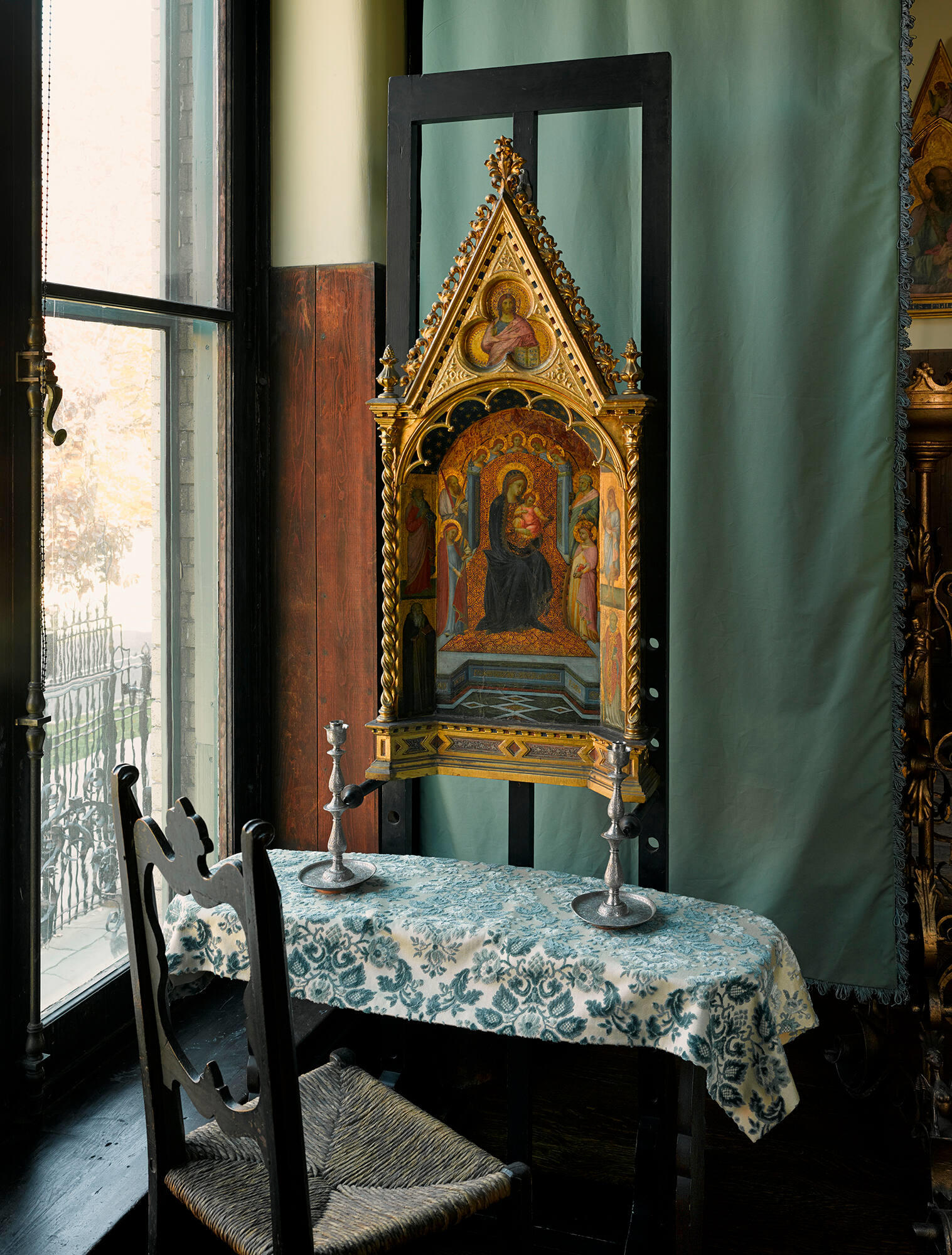
The Early Italian Room, showing the installation with Bartolommeo Bulgarini’s Virgin Enthroned with Saints and Angels above Elsie de Wolfe’s sofa table
Isabella Stewart Gardner Museum, Boston. Photo: Sean Dungan
Elsie de Wolfe, also known as Lady Mendl, was both a close friend of Isabella’s and a pioneering interior decorator. Gardner—who had her own aesthetic—did not hire de Wolfe to design her homes. She likely bought the table as a way to support both a friend and a female professional.

Byron Company (New York, founded 1892), Elsie de Wolfe, 1896. Gelatin silver print, 51.5 x 41.9 cm (20 1/8 x 16 1/2 in.)
Byron Company, Museum of the City of New York (93.1.1.18271)
An Unlikely Friendship
The two women grew up in the Victorian era, but they had opposite responses to tastes of the period. Gardner embraced the period’s rich color palettes and heavy drapery. De Wolfe preferred bright, creamy walls and furniture inspired by the 18th century French Rococo style. Mainstays of her designs were French antiques, mirrors, white paint, chintz, pastel colored furniture, and trelliswork motifs in wallpaper.
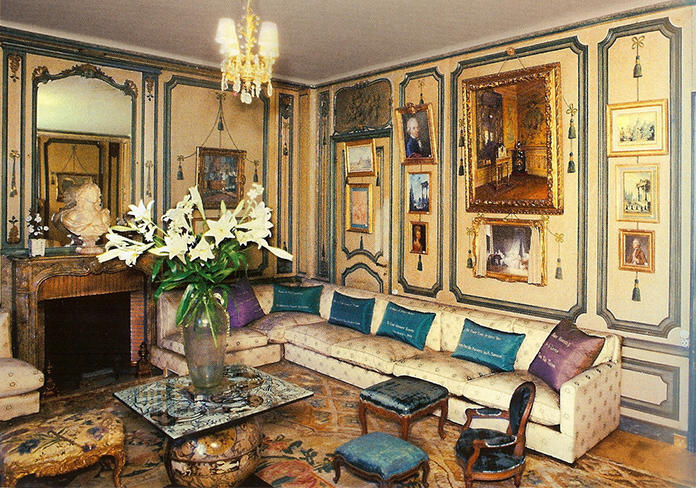
Elsie de Wolfe’s private sitting room at Villa Trianon, her home in Versailles, France
De Wolfe started her interior design business in 1905 and soon after took on her first major project of designing the Colony Club, a women-only private social club in New York City. She went on to decorate homes and associations on the East Coast. Her highest paying project was the Ladies’ Reception Room of the Frick Mansion (now the Boucher Room of the Frick Collection). She received a commission for the project from Henry Clay Frick with the specific pitch that she excelled in creating women’s rooms.
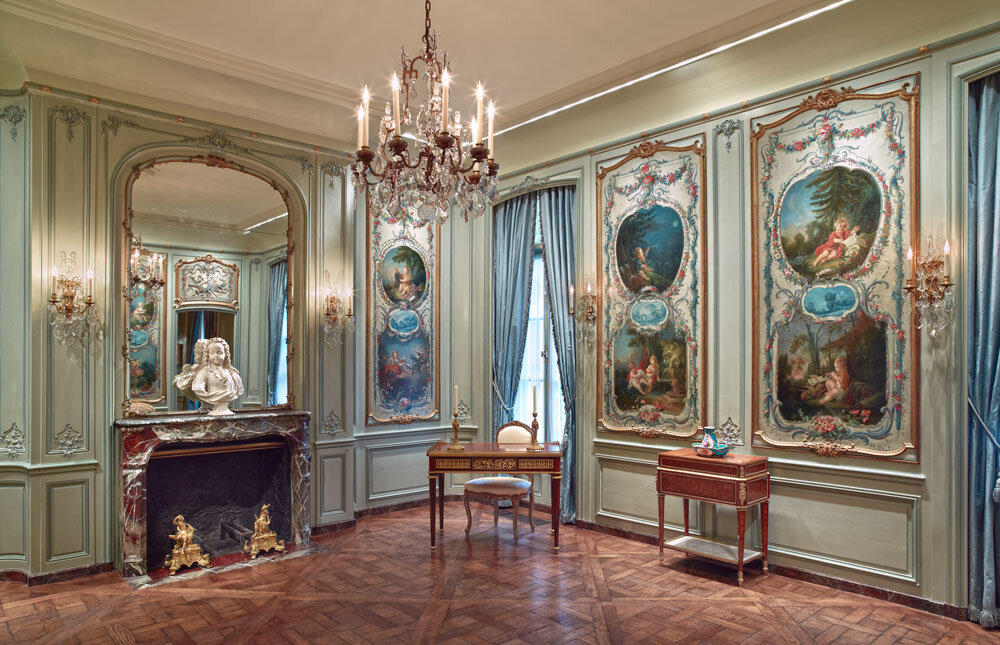
Boucher Room at the Frick Collection, New York, designed by Elsie de Wolfe
This was part of her marketing strategy: she appealed to the gender norms of the time by highlighting her feminine tastes. She also used this approach in her book, The House In Good Taste, published in 1913, in an effort to make her aesthetics accessible to middle class homemakers. Throughout the book she empowers women to decorate their homes by providing examples of not only her own creations but those by other women.
Though Gardner and de Wolfe had differing tastes, the two women were affectionate friends. They supported each other’s endeavors. After visiting Isabella’s Museum in 1907, de Wolfe writes:
I have no words to tell you the pleasure you have given me—I can’t leave Boston without writing you these few poor words. I shut my eyes close to shut in the beauty of all your wonderful things and shut out all the banalities and sordidness of my own immediate present. You have accomplished a great & beautiful thing...
For both women, their pursuit of beauty wasn’t without challenges, and they were fortunate to have romantic partners who supported their work. Isabella’s steadfast husband, John “Jack” Lowell Gardner shared her interest in collecting and desire to build a museum. Even when his wife’s behavior bucked the strict norms of nineteenth-century womanhood and was the subject of gossip, he stood by her. The couple would have constructed the Museum together if not for Jack’s untimely death in 1898.
Breaking into the Decorating World
De Wolfe had a decades-long relationship with her romantic partner Elisabeth “Bessie” Marbury. Though she ultimately entered into a marriage of convenience with Sir Charles Mendl, Marbury was de Wolfe’s true life partner. After she failed to realize her dreams of becoming an actress, de Wolfe struggled to build a career in interior design. Marbury recognized her talent and adamantly encouraged her to pursue the field.
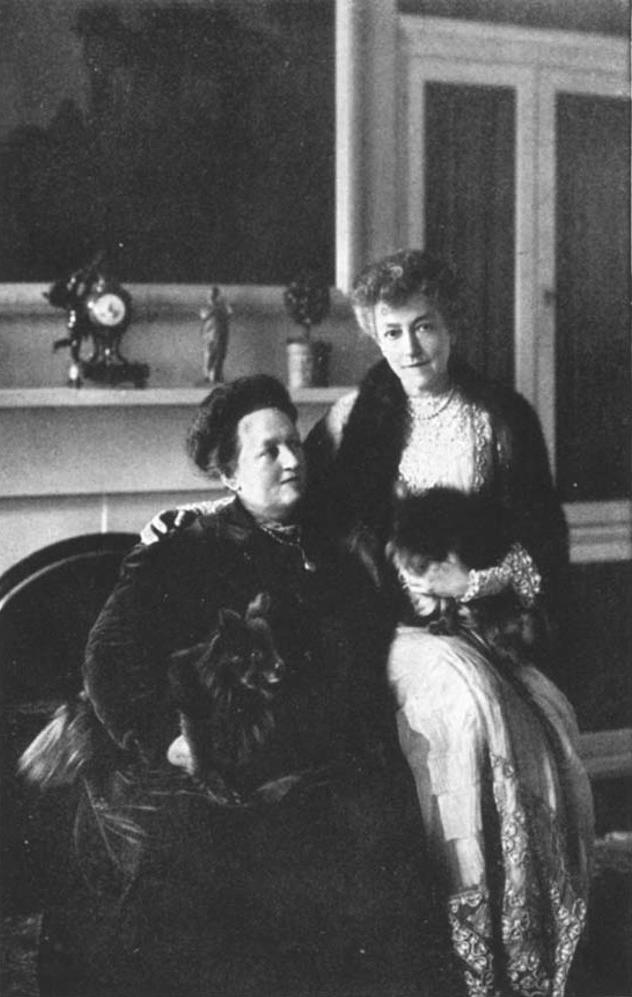
Elisabeth Marbury and Elsie de Wolfe, undated
Elisabeth Marbury’s Reminiscences of Elisabeth Marbury (1932)
By hosting social gatherings at their shared home in New York, Marbury advertised de Wolfe’s decorating skills to the guests. These ranged from celebrities to socialites to prominent figures in art and politics, which fueled the decorator’s business and reputation. In addition to the emotional and social support that Marbury provided, she was de Wolfe’s main financial support as she built her business.¹

Byron Company (New York, founded 1892), Bedroom in the home of Elsie de Wolfe and Elisabeth Marbury, 122 East 17th Street, New York, 1898. Gelatin silver print, 23.5 x 17.8 cm (9 ¼ x 7 ¼ in.)
Byron Company, Museum of the City of New York(93.1.1.18274)
A Long-Lost Designer
Despite her successful, decades-long career, sadly very little of de Wolfe’s work remains intact. Due to the nature of interior design, installations are often removed once a new owner takes over a home or building. Beyond that, de Wolfe’s remaining estate was liquidated in 1999. Photographs document her design projects and some furniture is in museum collections like Gardner’s. Nonetheless, she had a profound impact on interior design as a field that’s still recognized today.
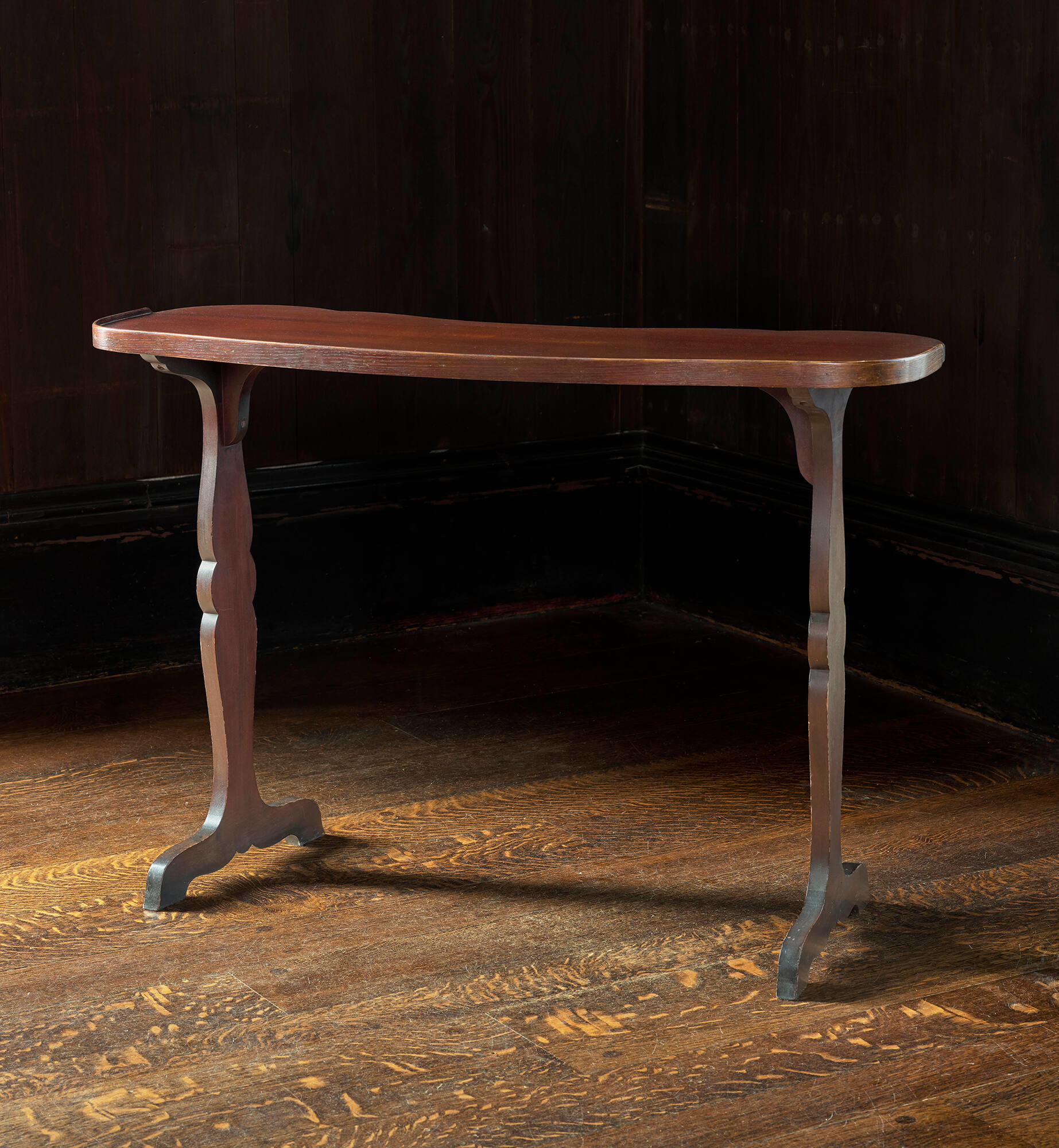
Elsie de Wolfe (American, 1865 - 1950, designer), Sofa Table, early 20th century. Beech, 67.5 x 99 x 30 cm (26 9/16 x 39 x 11 13/16 in.)
Isabella Stewart Gardner Museum, Boston (F15n5). See it in the Early Italian Room.
Considering the enthusiasm and warmth in the letters de Wolfe sent to Gardner, she would be happy that her friend’s “great & beautiful thing” remains intact. It will be available for the enjoyment of the public forever.
You May Also Like

Explore the Museum
Early Italian Room

Read More on the Blog
Blanche E. Colman

Learn More
Gardner Ambassador Program